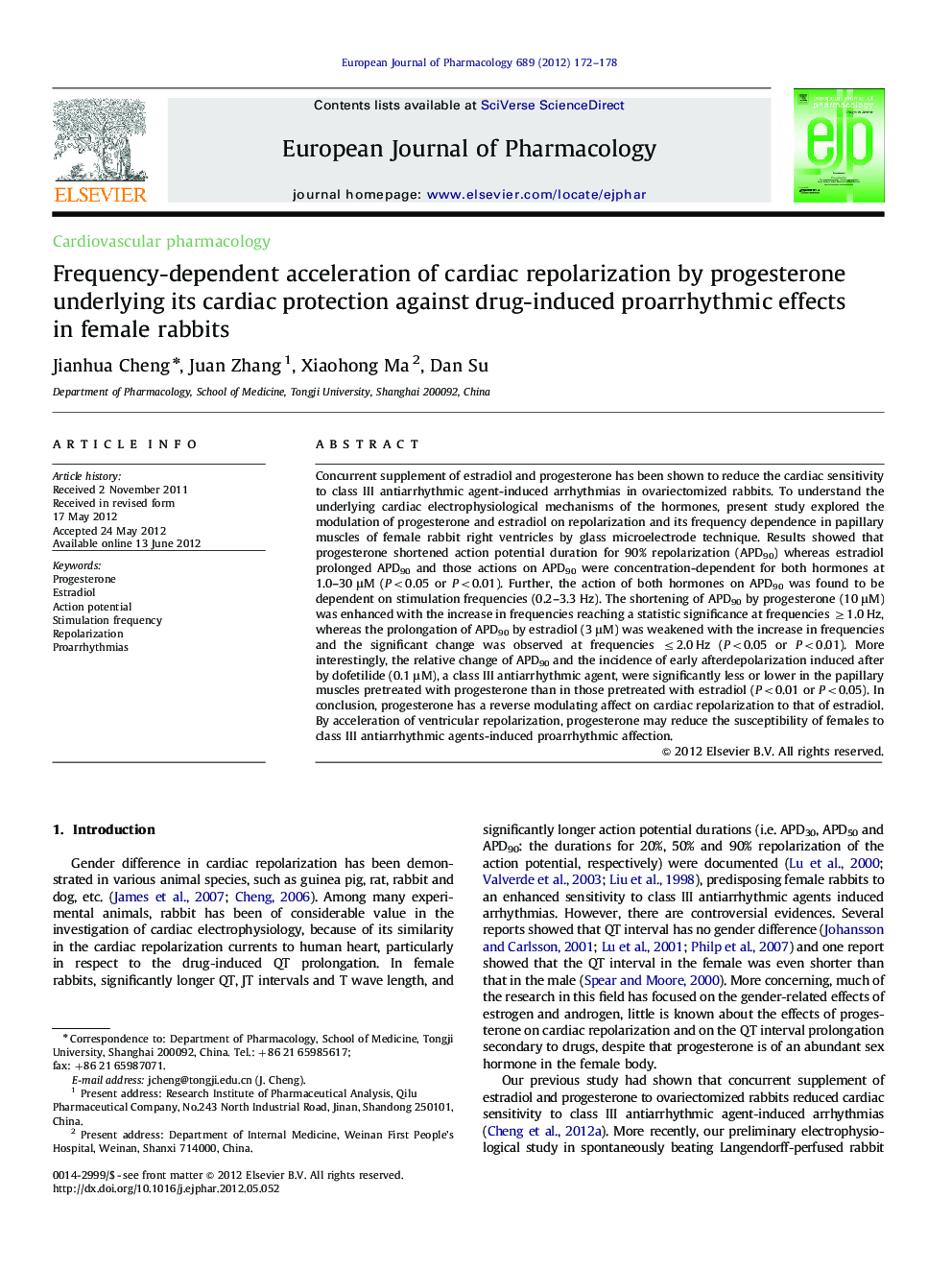| Article ID | Journal | Published Year | Pages | File Type |
|---|---|---|---|---|
| 5829426 | European Journal of Pharmacology | 2012 | 7 Pages |
Abstract
Concurrent supplement of estradiol and progesterone has been shown to reduce the cardiac sensitivity to class III antiarrhythmic agent-induced arrhythmias in ovariectomized rabbits. To understand the underlying cardiac electrophysiological mechanisms of the hormones, present study explored the modulation of progesterone and estradiol on repolarization and its frequency dependence in papillary muscles of female rabbit right ventricles by glass microelectrode technique. Results showed that progesterone shortened action potential duration for 90% repolarization (APD90) whereas estradiol prolonged APD90 and those actions on APD90 were concentration-dependent for both hormones at 1.0-30 μM (P<0.05 or P<0.01). Further, the action of both hormones on APD90 was found to be dependent on stimulation frequencies (0.2-3.3 Hz). The shortening of APD90 by progesterone (10 μM) was enhanced with the increase in frequencies reaching a statistic significance at frequencies â¥1.0 Hz, whereas the prolongation of APD90 by estradiol (3 μM) was weakened with the increase in frequencies and the significant change was observed at frequencies â¤2.0 Hz (P<0.05 or P<0.01). More interestingly, the relative change of APD90 and the incidence of early afterdepolarization induced after by dofetilide (0.1 μM), a class III antiarrhythmic agent, were significantly less or lower in the papillary muscles pretreated with progesterone than in those pretreated with estradiol (P<0.01 or P<0.05). In conclusion, progesterone has a reverse modulating affect on cardiac repolarization to that of estradiol. By acceleration of ventricular repolarization, progesterone may reduce the susceptibility of females to class III antiarrhythmic agents-induced proarrhythmic affection.
Related Topics
Life Sciences
Neuroscience
Cellular and Molecular Neuroscience
Authors
Jianhua Cheng, Juan Zhang, Xiaohong Ma, Dan Su,
